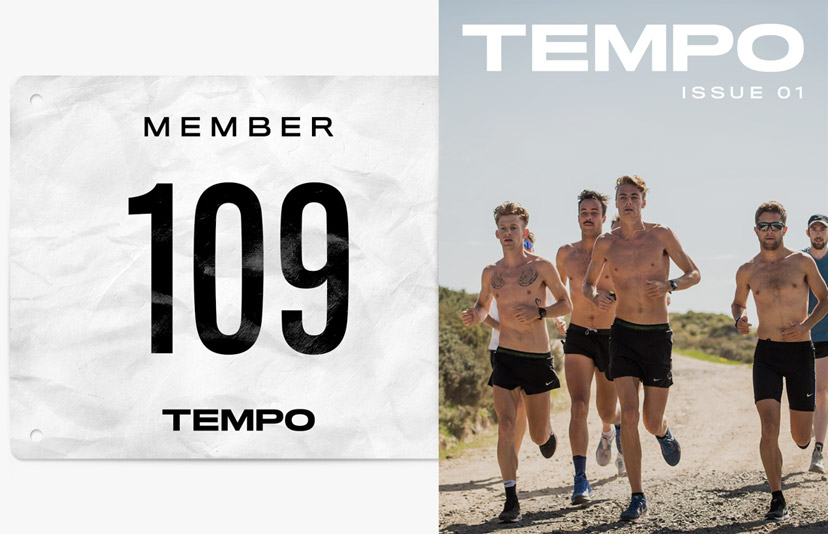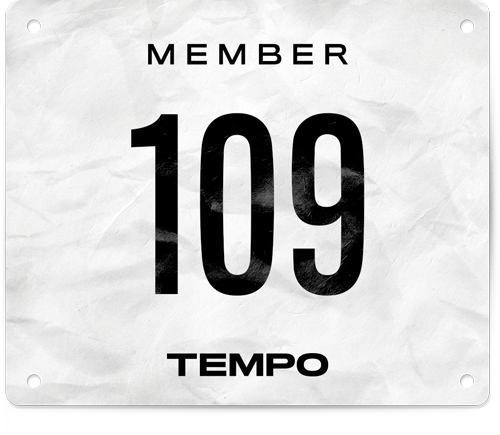Culture
Reunited Nations
The Speed Project ’22
Did you know a typical poker game generates more possibilities – more combinations of luck, in the cards, and skill, in the betting and bluffing – than there are atoms in the universe?
If you were able to count all the possible decisions and chance outcomes that go into running The Speed Project, you’d likely come away with a similarly mind-bending figure.
After all, this is the infamous unsanctioned race that challenges participants to get from the Santa Monica pier in Los Angeles to the Las Vegas sign in the shortest time possible. By any route they can devise. In a team of four men and two women, or of six women, or as a solo runner, or in “freestyle” formation with anywhere between two and 20 runners.
Then there are the tactical combinations. Unlike in a traditional relay with predetermined sections, Speed Project teams make their own decisions about when to change ‘horses’. Should runners hand over every five miles? Or might a quickfire rotation every few minutes work best? Spoiler: the current record holders deployed the latter strategy to devastating effect in 2021.
You can see how The Speed Project quickly generates dizzying odds. And you’ll have to excuse the gambling analogies – they’re hard to avoid given the finish line at one of Sin City’s most iconic landmarks.
“We basically have several races within the race,” says Speed Project co-founder Nils Arend.
We caught up with Nils during, for him, a quick dinner pitstop on Monday evening, after the solo runners had left the starting line at 4am that morning. He’d been up since 2am, which is probably just a taste of what the runners, support crews and organisers will go through this year.
“Running 300 miles is already full-on nuts, but he decided to up it another level. So it just shows that the format we have allows creative minds to really take it and make it their own.”
Nils Arend
The solo category, though it emerged during TSP’s ‘Covid years’, is an exciting development in 2022, with more runners trying more different approaches to the race than ever before.
(But first, a brief Covid recap. In 2020 TSP DIY challenged runners around the world to cover the furthest distance they could in 31 hours and 15 minutes, the record at the time for the traditional LA–LV scramble; in 2021, the original interstate race was held in May and the DIY event was repeated in September.)
“We’re bringing new programming elements to life this year. One is the solo mission, which we introduced during Covid but it hasn't had its breakthrough, because we are not really native in the ultra-running community – and I'm very interested to see how we can bring those two worlds together. One is like, how should I say it, the younger, edgier running community, and then there’s the very hardcore, very tightknit ultra community.
“So I'm very curious to see how those worlds will play with each other, and amongst each other, in the coming years as well.”
“The uniqueness of the format of Speed Project – which is that there are basically no restrictions and there is a lot of room for creativity – really comes to life perfectly in the way the different solo runners are approaching this.”
Speaking on Monday, Nils was looking forward to watching things unfold.
“So we have Jason Ayr, who is sticking to the original route, meaning the route we ran in 2013.” That’s when the event was born as a harebrained idea among a group of friends, before officially launching around 2015.
“Then we have David Kilgore, who is the current record holder for the solo mission, and his approach is to find the shortest legal route possible. So, he was joking that he's gonna run with a machete because there's so much off-road and trail, and just desert and full-on undefined environments, he's gonna go through.”
But The Speed Project is a massively challenging, unpredictable beast. Especially for the solo runners treating it as an ultra marathon. By Wednesday, both Jason and David were out of the race.
“By 6pm on the first day everyone in the six-person teams has run a full marathon. The amazing thing with Speed Project is you keep going.”
Christian Brecheis
Others were still hanging on but hadn’t quite reached the finish line as we went to press.
“And then there is James Poole, for example, who has decided that he's going to do the entire solo run unsupported. So, he will only use or accept support from anything that is available to the public, meaning a 7-Eleven, a gas station, a motel – whatever else is out there – but he would refuse to receive any help from anybody that wouldn't be available to the public.”
“Which is crazy, right? Running 300 miles is already full-on nuts, but he decided to up it another level. So it just shows that the format we have allows creative minds to really take it and make it their own.”
The starting siren for the three team categories goes off at 4am Friday. Last year, closed borders, and Covid restrictions more generally, saw a reduced field. This year it’s the United Nations.
“In May 2021 we went back and returned to LA–Las Vegas in its traditional form, but that was during the time international travel was super restricted and we only had, I think, one Mexican team and one Canadian team.
“Now, in 2022, we have the largest field ever with over 50 teams, and amongst the 50 teams we have over 20 countries represented.”
“The worldliness and global aspect of The Speed Project is really at the heart of why we're doing this. The idea of using the sport and bringing different cultures together is one of the main motivations and drivers for us – to bring this race back into people's travel schedules and race calendars.
“What is really special for me in 2022 is, obviously, the global factor – but also we are putting a lot of effort into the curation of the field. We’re seeing a very diverse field with representation from all different backgrounds and cultures. We're seeing very strong participation within all-women's teams as well as in the core of what Speed Project is about: the competitive aspect of the race. I see this as one of our big responsibilities: to have the competition at the heart of what we're doing and not just organising a party.”
That competitive spirit is fierce in the all-women teams category.
“There is a strong team coming from Mexico City, and then there is pretty strong competition between women's teams from On Running and Lululemon Running.”
Interestingly, On put its female team together through an international callout, so the brand should have a depth of talent to draw upon.
In the most competitive category of all – the OG mix of two female athletes and four men – a trend to watch in 2022 will be the rivalry between a new batch of professional teams and the seasoned, and determined, amateur crews.
“You’ve been struggling for an entire day with resting and refuelling; it’s exciting and the day goes by super quickly. And then you run all night.”
Christian Brecheis
“There's a team from Altra, the footwear brand. I haven't got confirmation of all their athletes, but I definitely know there are a couple of Olympians on their roster. So they're going full pro-athlete style. It’ll be interesting to see – we have the defending champions [the Daddy Braddy Stallions], who are all sub-elite, very strong runners but they don't make a living with this – and then we have the pro athletes coming into the space.
“It will be cool to watch who's actually executing this in the most efficient and best manner to see who's going to lead this.”
Defending champs the Daddy Braddy Stallions set the current TSP record of 29:51 in 2021, and are a force to be reckoned with. It’s they who innovated a two-shift rotation in the six-person team, with each three-person shift tagging hands as often as every two minutes in the final push towards Vegas.
And their recon game is tight. The Stallions claim to have shaved around 60 miles off the original 340-mile route of 2013, which went straight through Death Valley.
“I've heard that there are people spying on their Strava data to find out which route they ran, so there's a lot of chatter and scouting in the desert. People have spent weeks out there trying to find the shortest legal route so there's a lot of pressure on the fast teams who have basically decided to race the shortest legal route.”
The ‘modern’ course often eschews Death Valley for the so-called Powerline Road, but there’s no escaping the desert.
“You still have to go through Mojave Desert, and it's not like you're not running through a desert anymore.“
“Any kinds of shortcut, any reduction on mileage, comes with a price to pay – like crazy terrain, more elevation, it’s hard to navigate – so there is no easy shortcut. And also, historically speaking, there have been RVs, jeeps and vehicles stuck in the desert. We've seen a lot of complications when people have underestimated the brutality of the desert.”
You can keep track of the teams’ progress through this hellish landscape – and watch them draw ever closer to the lurid neon lights that await them – by following the TSP Instagram.
“During the relay we have our famous 'on the hour, every hour', so every full hour during the race we're going live – starting with a news show at 3am on Friday.”
Stay tuned to find out which combination among all those universe-busting micro-decisions – all the choices made under the pressure of terrain and clock, often in the face of stupid luck – will ultimately pay off, crowning the winning team of The Speed Project 2022.


